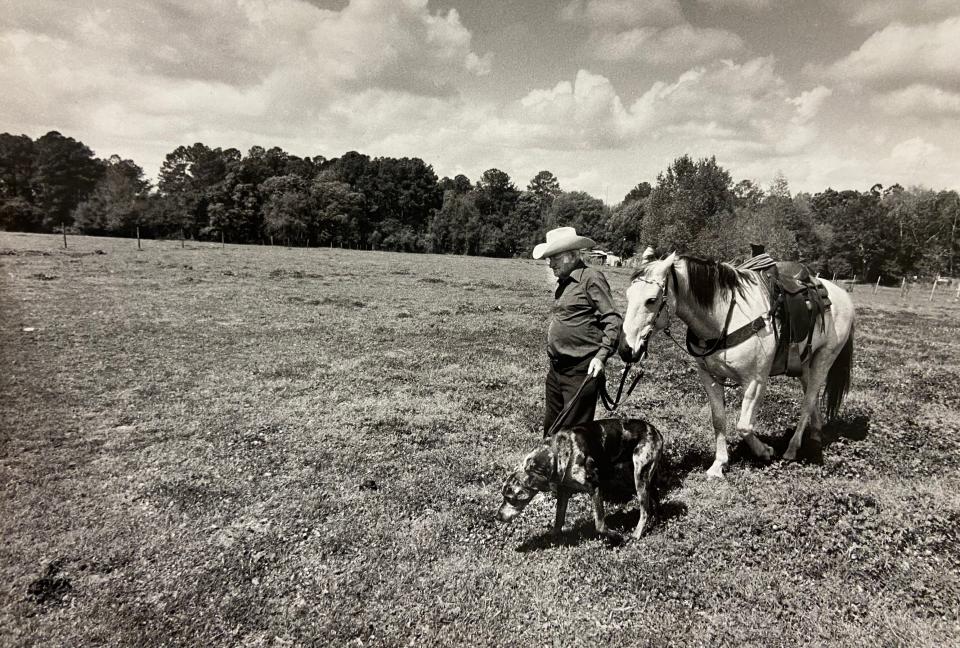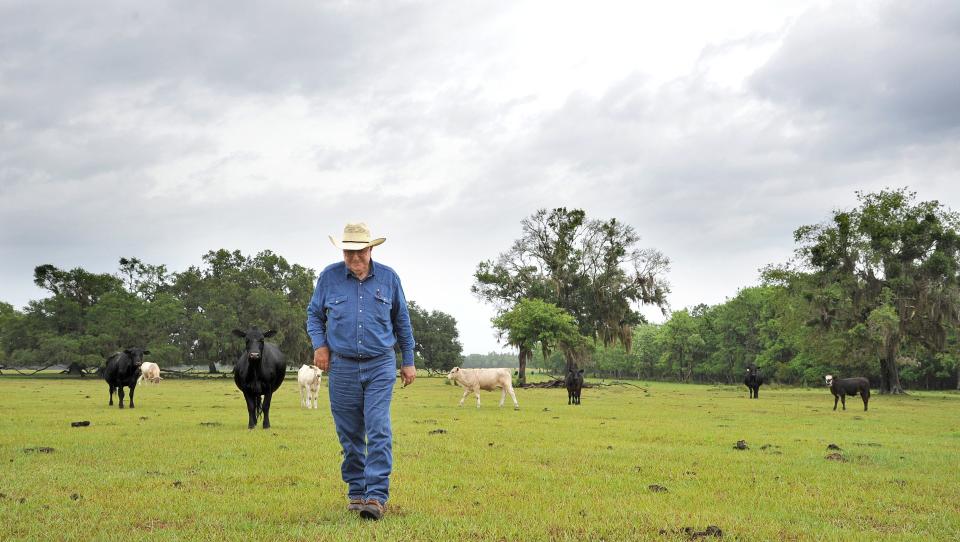Across Northeast Florida, cowboys told their stories of the old days on horseback
- Oops!Something went wrong.Please try again later.
The old cowboys spoke of wide-open frontiers and cattle drives that covered hundreds of miles of challenging territory. Not out West, mind you, but across old Florida.
It’s been going on for centuries: Northeast was home to the first cows in North America (Ponce de Leon brought them in 1521) and the first cowboys too (the Spanish of St. Augustine). And in what became downtown Jacksonville, there is a narrow spot on the St. Johns River that carried the descriptive name of Cowford.
The Times-Union has, over the last few decades, explored the lives of some of the old cowboys that remained, even as roads and businesses and houses covered the once-open spaces. Their colorful stories proved irresistible to the writers who visited them.
Consider cowboy George Jaques, who, when reporter Judy Wells visited him in 1977 had a riding stable on Lone Star Road in Arlington and no shortage of stories of the old days — though he was reluctant to tell his age.
He came to Jacksonville at age 9 in a covered wagon his family brought all the way from Amarillo, Texas. He told of range wars between cattlemen against citrus growers and of riding a horse from Merritt Island to Jacksonville. “He was wild when I started, from there all the way here. Took me 15 days and nights. Still have the shoes I had on him over there in the barn.”
Rare unanimity: Spending to help protect Florida wildlife routes, some on First Coast, gets DeSantis' OK
Mark Woods: A legacy of refusing to destroy old Florida and a gift to The Nature Conservancy
On the range in Green Cove: 50 years later, this North Florida cowboy is still in the saddle with cow in his blood
Then there was Jasper S. “Uncle Speedy” Solomon who died in 1985 at 88. Upon his death, the Times-Union called him “Jacksonville’s oldest cowboy and a man who taught thousands of youngsters how to ride and rope.”
It told how he remembered driving native cattle to ships bound for Cuba and taking cattle down Bay Street in downtown Jacksonville to the city’s slaughterhouses in the days before World War I.
The year before he died, Solomon, who claimed he could read the stars and moon better than he could read a road sign, told a reporter of long trips on Florida's trails in the early decades of the 20th century.
“I’d take two pairs of overalls and washed one every night so I’d always have a dry suit to sleep in,” he said. “There was always a pond to take a bath in. I had a slicker and a bed roll. I’d use my saddle for a pillow.”

In 1988 reporter Dana Treen went to Hastings to meet 73-year-old Ray McCullough, who had followed his father into the Florida cowboy life. McCullough was still doing some cowboying, but it was nothing like the old days.
“There just ain’t much demand for a man on horseback no more,” he said.
In 2017 I was lucky enough to visit Jim Farley, who was then 68, on his 3,000 acres in Green Cove Springs where new suburban houses crept right up the property line.
He joked good-naturedly about the “romance” of being a cowboy: Ask the Western cowboys who’ve come out over the years, he chuckled, about the romance of it all. Florida’s heat and bugs and thick swamps made short work of them.

He started leasing land when he was 17, and his Jim Farley Cattle Co. did well over the years shipping calves to feedlots out West.
Reached recently on the phone, he said he’s still doing some cowboying, but he’s happy that his two sons have decided to do most of the work these days.
As for all of Farley's cows? “I fed them for a long time. Now I’m letting them feed me.”
This article originally appeared on Florida Times-Union: Jacksonville-area cowboys told stories of driving cattle across Florida

